AC11 CYCLING INFRASTRUCTURE WITHIN SUPERBLOCKS
Cycling solutions for access streets and inside superblocks
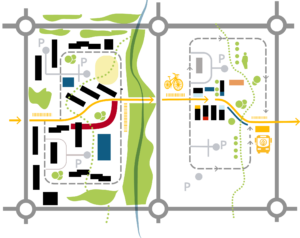
Aim
Provide the areas within the Superblocks with cycling infrastructure and facilities so as to facilitate the use of the cycle path network and consequently reduce car use
Why?
For the same reasons given in the fact sheet regarding the network of cycle paths. Furthermore, it should be stressed in this case that all the studies carried out have shown that shoppers who arrive at shops by bicycle or walking spend more on local commerce, which favours commerce in the neighbourhoods, and with it the dynamism, the presence of people on the streets and, therefore, their safety.
How?
The access roads are streets with residential, commercial and relationship functions, within Superblocks, and in general should be limited to 10-20 km/h. If the treatment of these streets is appropriate, and there is little road and bicycle traffic, it is not necessary to implement separate bicycle paths. However, the typical section to be adopted should be carefully analysed.
A very strict section is recommended, in which it is not possible for a car to overtake a bicycle, but it is possible to cross a bicycle and a car, even if it is reducing both speeds, if it is one-way. This contributes to a reduction in speed, but it is also recommended that additional measures such as elevated crosswalks be taken to give continuity to pedestrian itineraries. The level street solution can also be adopted if they are not part of a main cycling route. In the case of two-way streets, the central line should not be painted.
If there are no separate bicycle paths and a utility strip or parking space is required, a protection strip of at least 50 cm shall be provided if the parking space is longitudinal. If angled parking is available, it should have a rear entrance.
In the event that these access roads are part of a main cycle route, the cycle street solution should be adopted, with a 20 km/h limit. In this type of street, the bicycle has priority and this will be stated in the design and signposting. For this purpose, parking and through traffic will be limited to a minimum, using the one-way direction for automobiles.
It is not recommended to adopt the single platform on this type of road, since, as it forms part of main cycling itineraries, limiting the speed of the single platform would make the bicycle uncompetitive compared to the car, even if the car is obliged to travel longer itineraries.
If the DAI of cars is greater than 2500, it will be necessary to adopt measures to separate the traffic, but not before trying to reduce this value through other measures of road and parking management.
It is essential to install safe bicycle parking areas in trip attraction zones. These parking areas should have different characteristics according to their use and the duration of the stay, but in any case the location is the most important characteristic. If the location is not suitable, they will not be used.
In general, the basic requirements will be as follows:
• The area where they are located must be visible and recognisable.
• Each individual station should be designed so that it does not cause damage to the bicycle. It should be possible to park the bicycle with only one hand and, in general, to secure a wheel and the frame to the rack.
• It is important that the bike rack has a clean and tidy image. It is therefore necessary that they are robust, require little maintenance and the area is easy to clean. The elements that are anchored to the floor in a few points are easier to place and clean.
• The racks must always be placed on the carriageway, not on the pavement.
Some types of bicycle racks can be recommended depending on their use:
• Short duration in busy commercial streets: butterfly support.
• Study centres: covered and enclosed areas, sheds, with inverted U-type or butterfly support.
• Office buildings or large work centres: closed premises in garage with double height supports.
• Libraries, health centres, administration offices: inverted U-type at the entrance.
• Train or bus stations: lockers or closed parking with double height supports.
• In the street: inverted U-type supports.
• Bus stops: inverted U-type supports in a shed or bike storage units if the area is not frequented.
• Events: temporary portable bars in supervised areas.
Examples of bicycle parking on access roads (Source: The Danish Cyclists Federation)


Bicycle parking at Houten train station (Netherlands)
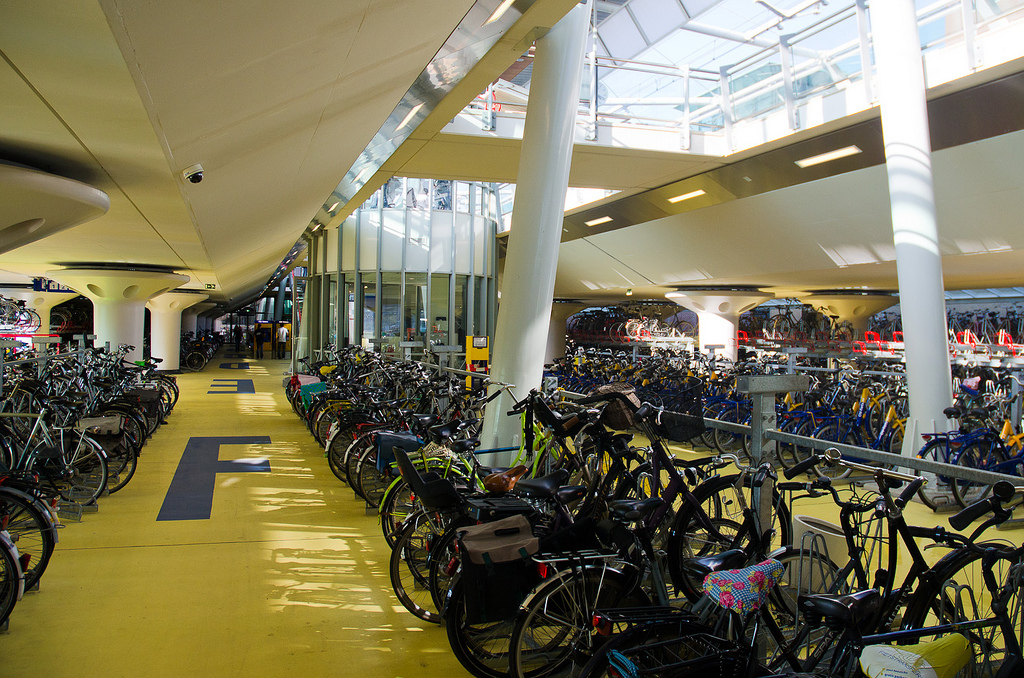
Event Temporary Parking
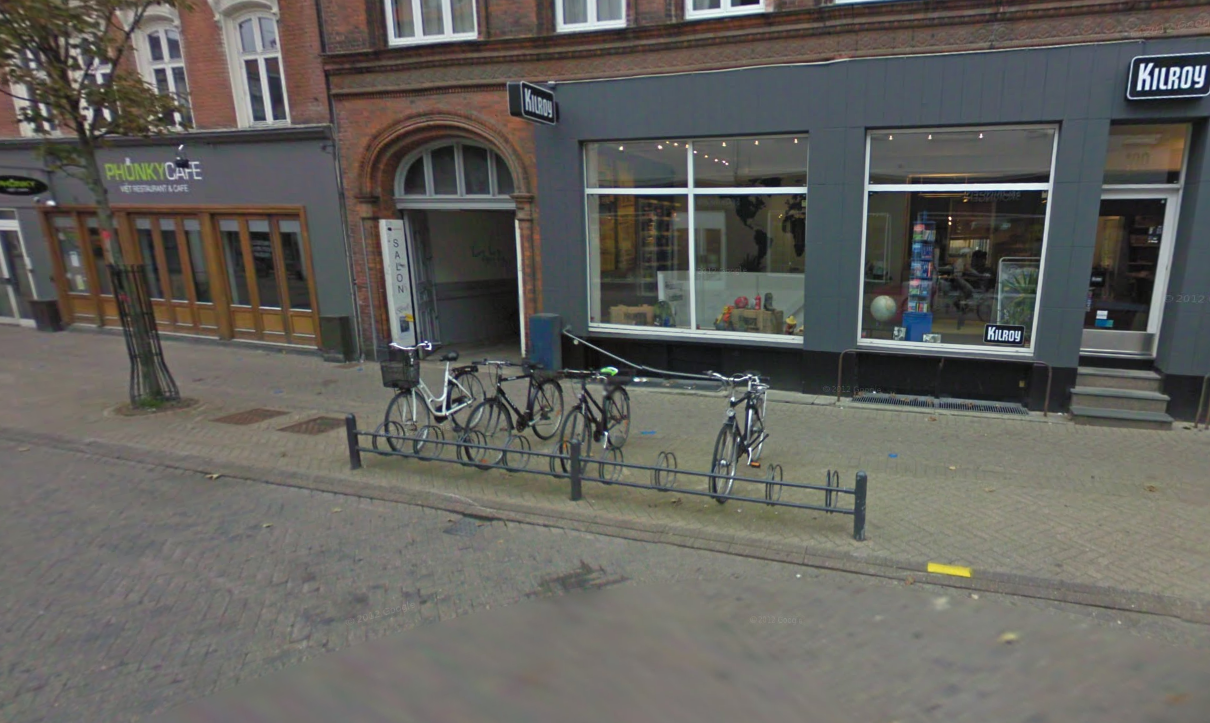
Shopping streets in Odense (Denmark) (Source: Google)
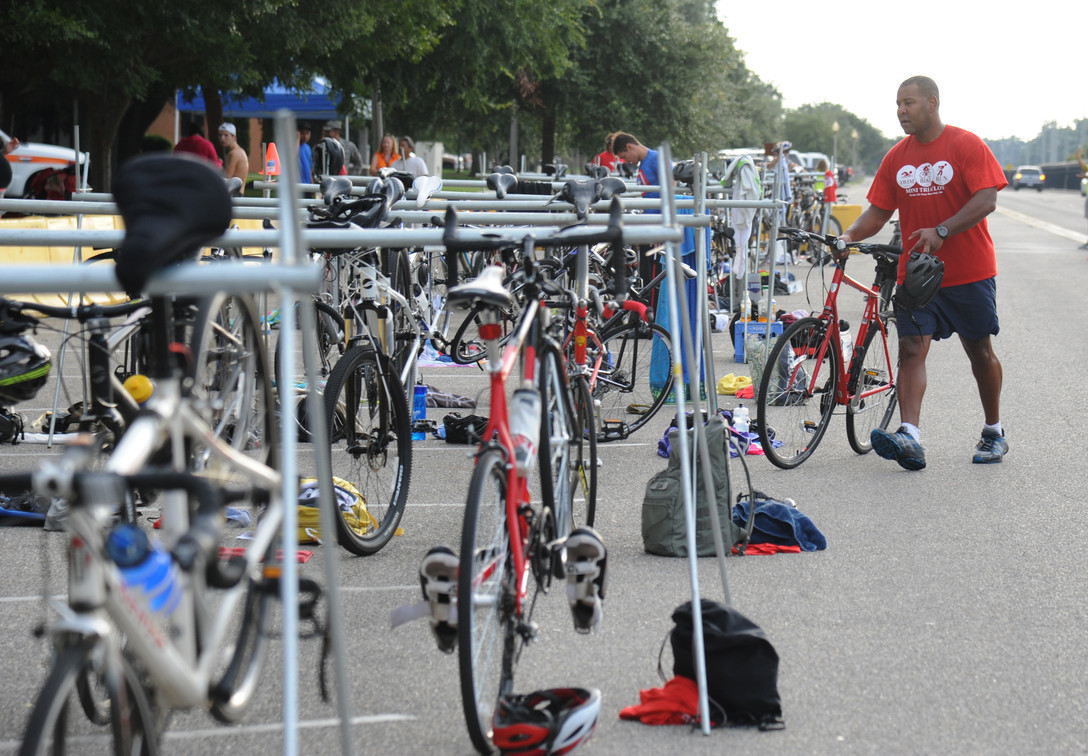
Example of a counter-flow cycling space, providing continuity for cyclists on a street that avoids passing motor vehicle traffic due to its opposing directions.
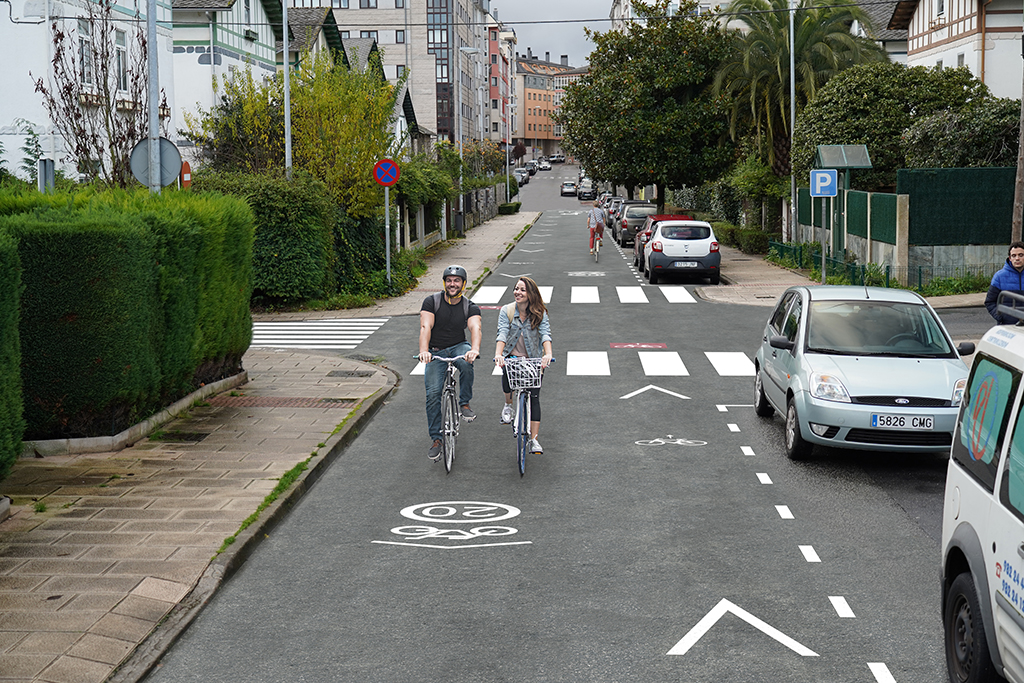
NEIBORHOOD SCALE INTERVENTION

ISSUES AFFECTED
SUITABLE FOR COMBINING WITH OTHER SOLUTIONS
Measuring elements
Indicator
Main: CO2 reduction by switching from private vehicle to bike trips
Secondary: % of trips from PV to bicycle
Unit
g CO2
%
Minimum Goal
2 % of trips from PV to bicycle
Desirable Goal
6 % of trips from PV to bicycle
Measure method / Formula
Anual Mobility Survey
∆g CO2=A x [B – C] x D
A: % of trips from PV to bicycle
B: PV CO2 Emission Factor (g CO2/km)
C: Bike CO2 Emission Factor (g CO2/km)
D: Total km travelled
The formula may vary depending on available data.
PLANNING LEVEL
General Planning
Development Planning
Urbanization Detailed Design
Construction Detailed Design
PEOPLE INVOLVED
Local Officials
Planning and design team
POSIBLE ACTIONS DEVELOPED BY THE ADMINISTRATION:
∙ Fund bicycle racks for communities or companies that have reduced the use of the car in their activity


















